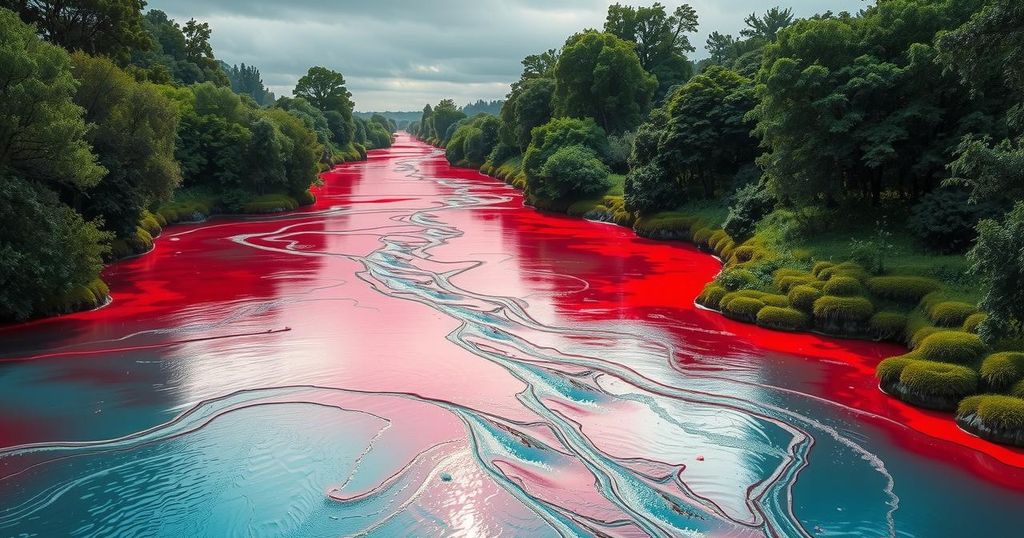Concerns Rise as Buenos Aires River Turns Red, Prompts Investigations

The Sarandi River in Buenos Aires, Argentina, has turned bright red, alarming local residents due to potential contamination concerns. This discoloration is not unprecedented, as the waterway has previously shown various colors. Environmental officials are testing samples to identify the cause and address community concerns.
A river in the Sarandi suburb of Buenos Aires, Argentina, has unexpectedly turned bright red, raising concerns among local residents. Observations of this discolored waterway, which feeds into the Rio de la Plata estuary, have been documented through images and videos. Residents noted that this is not an isolated event, as the river has previously exhibited a range of colors, including gray, green, violet, bluish, and brown.
Concerns have been voiced regarding potential contamination, reflecting the residents’ apprehensions about the cause behind the water’s frequent changes in hue. Some locals reported observing a thick, yellow film on the surface of the water, which emitted an acidic odor. Local environmental authorities have begun investigating, collecting samples of the red water for lab analysis.
The regional environment ministry stated that the water samples will undergo testing to identify the underlying factors responsible for the discoloration. Authorities aim to understand the situation fully and address the residents’ fears regarding environmental impact.
This incident highlights ongoing issues with waterways and pollution management in urban areas, prompting discussions about environmental safeguards and public health. Past occurrences of waterway discoloration may indicate systemic pollution challenges that require comprehensive monitoring and remediation efforts to prevent future risks.
The red discoloration of the Sarandi River in Buenos Aires illustrates a recurring environmental issue. Similar incidents have been reported in the past, often linked to contamination from industrial, agricultural, or municipal sources. Such changes can pose risks to both ecological systems and human health, prompting increased scrutiny from environmental authorities. Understanding the causes of these changes is vital for implementing effective remediation strategies and protecting local ecosystems.
In summary, the Sarandi River has turned red again, raising alarms among residents due to concerns over contamination. Official investigations are underway, with water samples being tested to determine the cause of the discoloration. This incident serves as a reminder of the broader environmental challenges faced in urban waterways, underscoring the need for vigilance and proactive environmental management.
Original Source: news.sky.com







